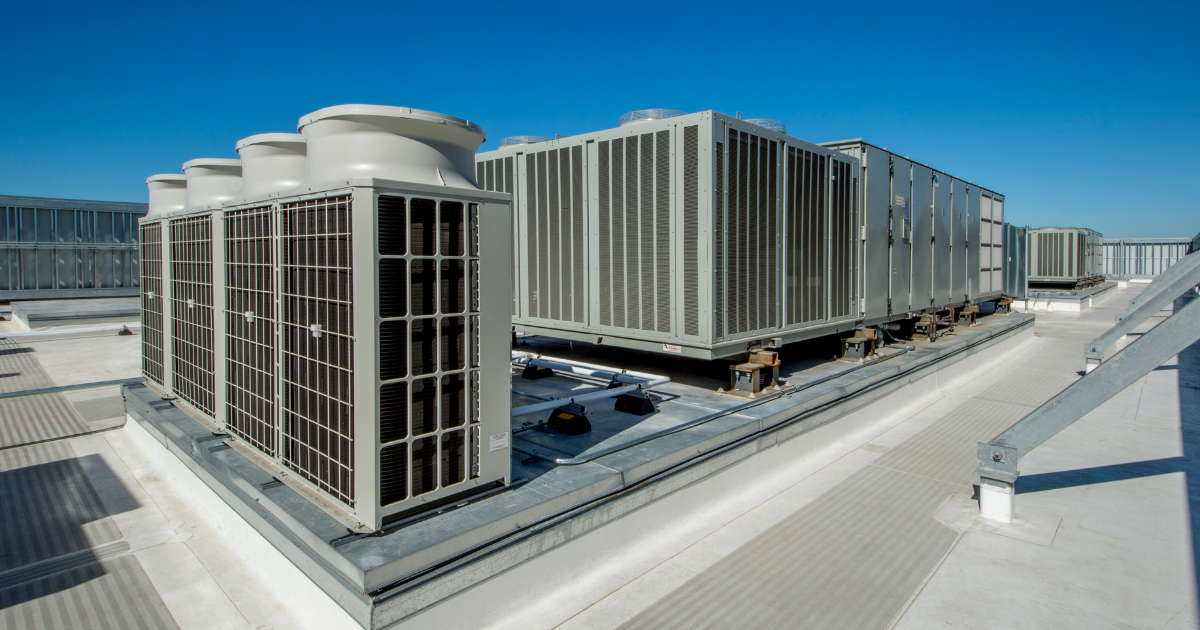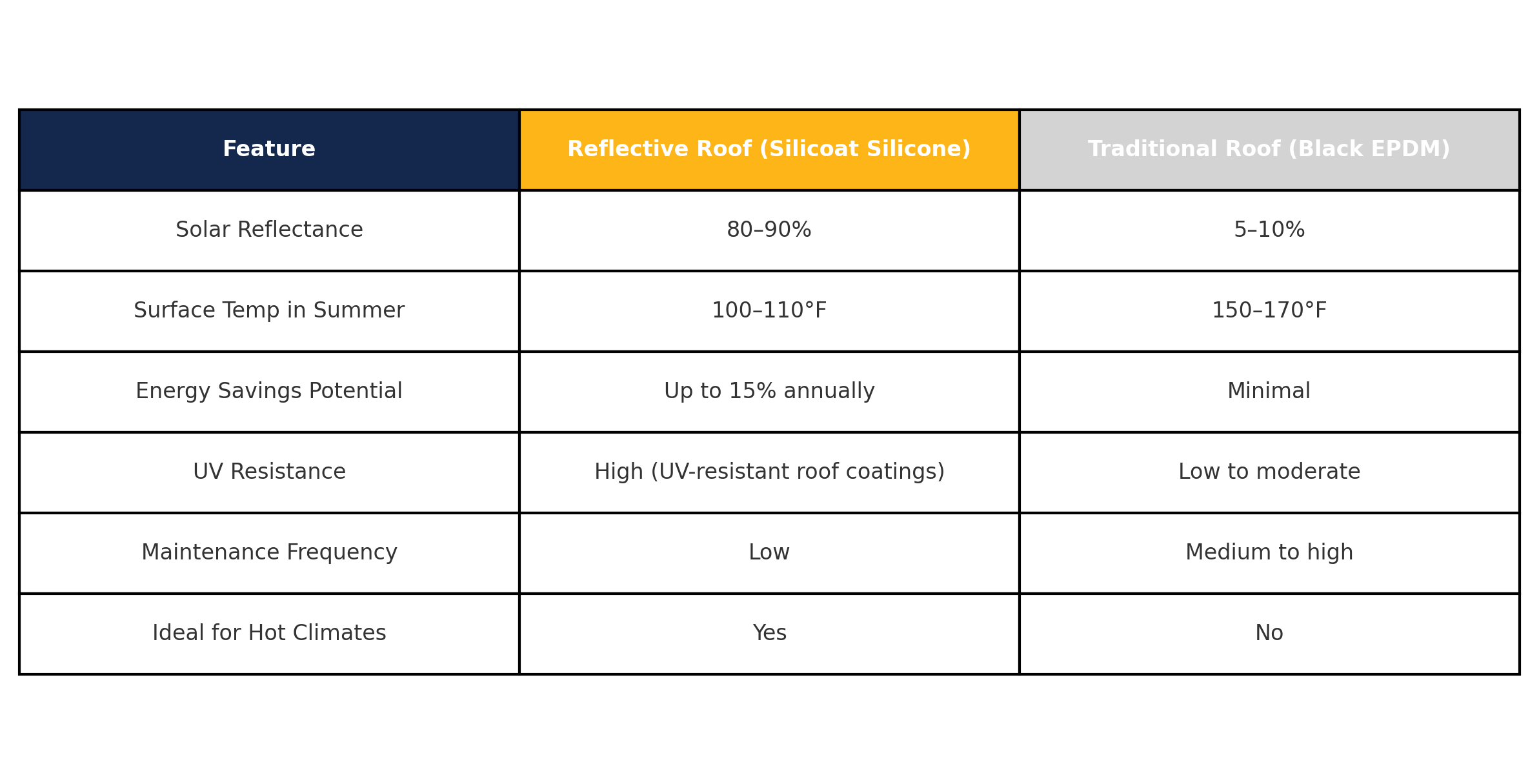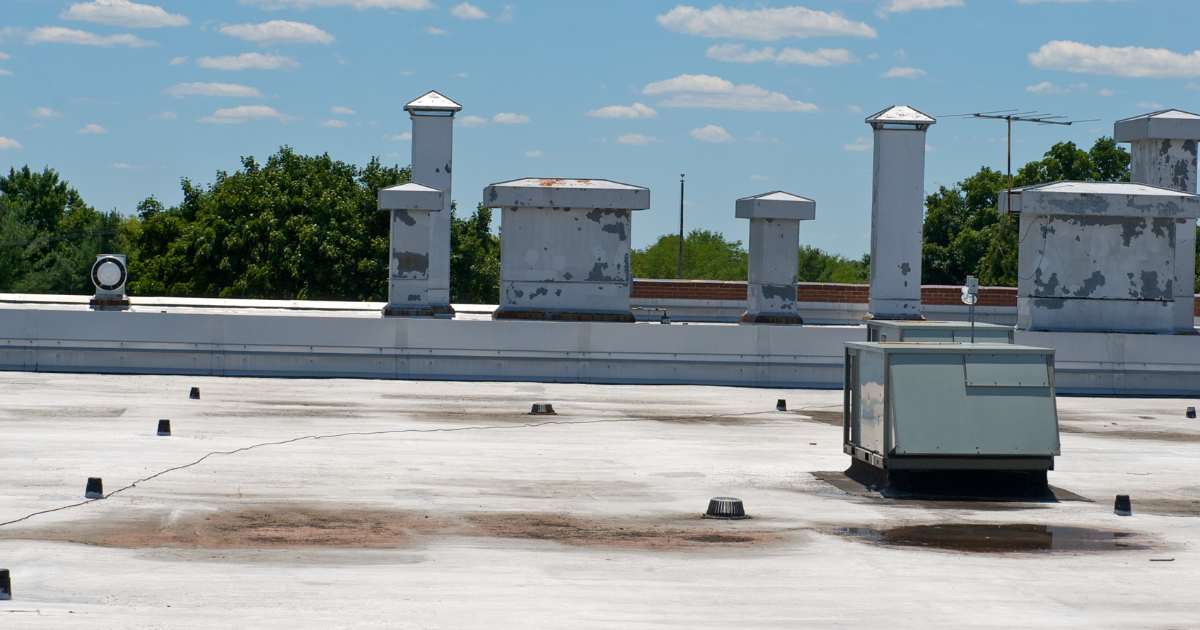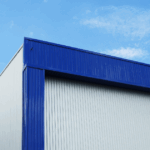
We know you’re doing everything you can to keep your building’s energy costs in check, but something still isn’t adding up. Despite HVAC upgrades and automation, your utility bills remain stubbornly high, especially in peak seasons, right?
What if the problem isn’t inside the building, but above it?
Many commercial property owners overlook a simple but powerful factor: roof color. The color and material of your roof can dramatically affect how much heat your building absorbs and how hard your HVAC system has to work to keep things comfortable.
At Silicoat Roofing, we help facility managers and building owners make informed decisions about energy-saving roofing systems. In this guide, we’ll break down how roof color and energy efficiency go hand in hand, how to choose the right reflective coating for your climate, and how much you could save in the long run. If you’re looking to cut costs without compromising comfort, read on to see how a smarter roof strategy can help you do both.
Why Roof Color Matters in Energy Efficiency
Your roof is more than just a weather shield, it’s a major player in your building’s energy performance. In fact, the roof is often the largest continuous surface exposed to sunlight, making it a prime factor in determining how much heat your building absorbs or reflects. For commercial facilities, that translates directly into how much you’re spending to cool interior spaces.
Dark-colored roofing materials tend to absorb more of the sun’s heat, which then transfers into the building. In hot climates or on unshaded rooftops, this can lead to a significant rise in indoor temperatures, increasing the load on your HVAC system and inflating your energy bills. Over time, that stress can even shorten the lifespan of your cooling equipment.
Lighter-colored roofs, in contrast, are naturally more reflective. They bounce a greater portion of solar radiation back into the atmosphere, keeping surface and interior temperatures lower. This is especially beneficial for large flat roofs commonly found on warehouses, office buildings, and industrial facilities, where the advantages of reflective roof coatings for commercial buildings, like reduced HVAC strain, lower cooling costs, and improved occupant comfort can be fully used.
According to the U.S. Department of Energy, cool roofs can reduce cooling energy use by 7% to 15%, depending on climate and building type – a savings range that can amount to thousands of dollars annually for large commercial properties.
But it’s not just a matter of picking a lighter color. True energy efficiency is the result of a smart combination of color, material type, surface coating, and the building’s location. Reflectivity, thermal emittance, and even how well the surface sheds dirt all influence the long-term performance of your roof.
That’s why a professional assessment is critical. At Silicoat Roofing, we analyze all these variables to recommend the most effective and durable solution for your structure, not just a new color, but a complete energy strategy.
Now that you understand how roof color affects heat transfer, let’s look at how different materials and coatings perform and why not all white roofs are created equal.

Heat Reflective Roof Colors vs. Traditional Options
Not all roofs perform the same. Reflectivity depends on more than just color – it’s influenced by the finish, durability, and how well the surface resists UV degradation and dirt buildup.
How Reflective Roof Coatings Work
Heat reflective roof colors are specially designed to reflect a significant portion of solar radiation, rather than absorbing it into the building. This is achieved through both the pigment and the finish of the coating, which are formulated to maximize solar reflectance and thermal emittance.
Most high-performance reflective systems use silicone or elastomeric coatings that not only reflect light but also withstand harsh UV exposure and weathering. These uv-resistant roof coatings help maintain performance over time, which is crucial for commercial roofs that are difficult or expensive to replace frequently.
Common Limitations of Traditional Roofing
Traditional dark-colored roofing, like black EPDM, tar, or asphalt, absorbs most of the sun’s heat, often reaching surface temperatures of 150°F or more on a summer day. While these materials may be cost-effective upfront, they can create hot roof systems that place extra load on cooling systems, reduce indoor comfort, and accelerate wear on both the roof and your HVAC equipment.
Additionally, traditional materials typically require more frequent proactive roof maintenance and cleaning. As they degrade, they can crack, bubble, or lose adhesion, particularly when exposed to intense UV radiation year after year. Remember: even in temperate climates, the cumulative effect of heat absorption from traditional roofing can result in higher energy bills and shorter roof life cycles.
Performance Comparison
To illustrate the practical benefits, here’s a side-by-side look at how heat reflective roof colors compare with traditional roofing materials in key performance areas:

While reflective roof coatings may come at a slightly higher initial cost, they offer significant long-term value through energy savings, HVAC preservation, and extended service life. In many cases, they also qualify for state and federal energy incentives, offsetting installation costs even further.
When evaluating bids, consider lifecycle costs, not just the upfront number. A cheap roof that needs replacement in 10 years costs more in the long run than a reflective system with a 20+ year lifespan and ongoing energy savings. Now, let’s explore how your local climate, building use, and roof material affect which roof color and coating is right for you.
How to Increase ROI on Your Roof Color
When it comes to choosing the right roofing solution, location matters more than you think. Climate, building type, and regional energy costs should all influence your decision, not just aesthetics or budget. Understanding how roof color performs across different environments can help you make a smart, strategic investment.
Northern Climates: Why Darker Roofs Still Have a Place
In colder regions where heating demands dominate most of the year, darker roof colors can work in your favor. Dark materials absorb more solar heat, which can slightly offset interior heating loads in the winter months, especially for older buildings with less insulation.
However, this benefit can diminish if your building has high-performance insulation or if climate change trends are bringing warmer summers to typically cooler regions. Additionally, it’s important to take into consideran how snow affects commercial flat roofs, including added weight, insulation impact, and snowmelt timing – all these should also be considered in cold-climate roofing strategies.
That’s why relying on color alone isn’t enough, you need a full picture of your building’s thermal behavior. If your facility sees high sun exposure year-round, even in a northern city, a hybrid or moderately reflective coating may outperform a traditional dark system.
Southern & Sunbelt Regions: The Case for Maximum Reflectivity
In hot and humid climates, high solar reflectivity isn’t optional – it’s essential. Roofs in these regions are exposed to intense UV radiation and elevated ambient temperatures for most of the year, making energy-saving roof colors and coatings critical for comfort and cost control.
Buildings with flat roofs or large surface areas, like warehouses, manufacturing plants, and shopping centers can experience dramatic interior temperature differences simply by upgrading to reflective roof systems. Remember: reflective coatings in hot climates not only reduce energy consumption, they also ease the burden on HVAC systems, prolonging equipment life and reducing maintenance needs.
The Role of Energy Modeling
Roof performance isn’t one-size-fits-all. To get the most out of your roofing investment, energy modeling is the missing link that helps quantify expected performance based on your building’s real-world behavior.
At Silicoat Roofing, we use: thermal imaging to assess current heat gain and insulation efficiency, local climate data to model seasonal temperature variations, and building orientation and roof slope to predict solar exposure over time. This holistic approach enables us to recommend the ideal combination of roof color, coating type, and material, all backed by data, not assumptions.
“Smart roofing isn’t about trends, it’s about data. When we recommend a color or coating, it’s based on the building’s energy profile, not just aesthetics.” – Rick Dodaj, Founder of Silicoat Roofing.
Our clients count on us to deliver systems that are tailored to their building’s unique footprint, not a one-size-fits-all recommendation.

Common Questions About Roof Color and Energy Efficiency
Is a white roof always the best choice?
Not always. In colder climates, the heating savings of a darker roof may outweigh the cooling benefits of a white one. That’s why a tailored analysis is essential.
Can I just paint my roof a lighter color?
You can, but that might not be effective. Our energy-saving roof coatings are engineered for high reflectivity and UV durability. Standard paint can degrade quickly, reducing its intended impact.
Are there rebates for installing reflective roofing?
Yes. Many states and utilities offer incentives for energy-efficient roofing systems. Check out your State’s Incentives for Renewables & Efficiency.
Will a reflective roof still perform well in winter months?
Yes. Reflective roofs primarily reduce cooling loads, but they do not significantly increase heating costs in winter. In fact, most buildings lose heat through walls, windows, and poor insulation, not the roof. Energy modeling helps determine whether reflectivity makes sense for your year-round energy profile.
Make a Smarter Roofing Decision Today
When it comes to energy efficiency, your roof isn’t just a passive surface, it’s a powerful tool. The right roof color and coating system can significantly reduce your building’s cooling demands, extend the life of your HVAC equipment, and help you meet sustainability goals without sacrificing performance.
But making the right choice involves more than picking between light or dark. It requires understanding how roof color and energy interact in your specific climate, how materials respond to solar exposure, and how professional-grade coatings can maximize long-term value. Whether you’re managing a retail facility in the Sunbelt or a warehouse in the Midwest, your roofing strategy should be tailored, not templated.
At Silicoat Roofing, we we engineer high-performance systems. From energy modeling to product selection and precise installation, we help commercial property owners and facility managers turn their roofs into active assets that support their bottom line.
Ready to rethink your roof? Contact us today for a free energy efficiency audit and discover what your roof could be saving you.
About the Author
Rick Dodaj is the founder and CEO of Silicoat Roofing, specializing in commercial roofing solutions that protect businesses and their investments. With extensive experience in commercial roofing, Rick leads a team dedicated to providing cost-effective, long-lasting roofing solutions. Connect with him on LinkedIn to learn more about commercial roof maintenance and protection strategies.


 Previous Post
Previous Post Next Post
Next Post